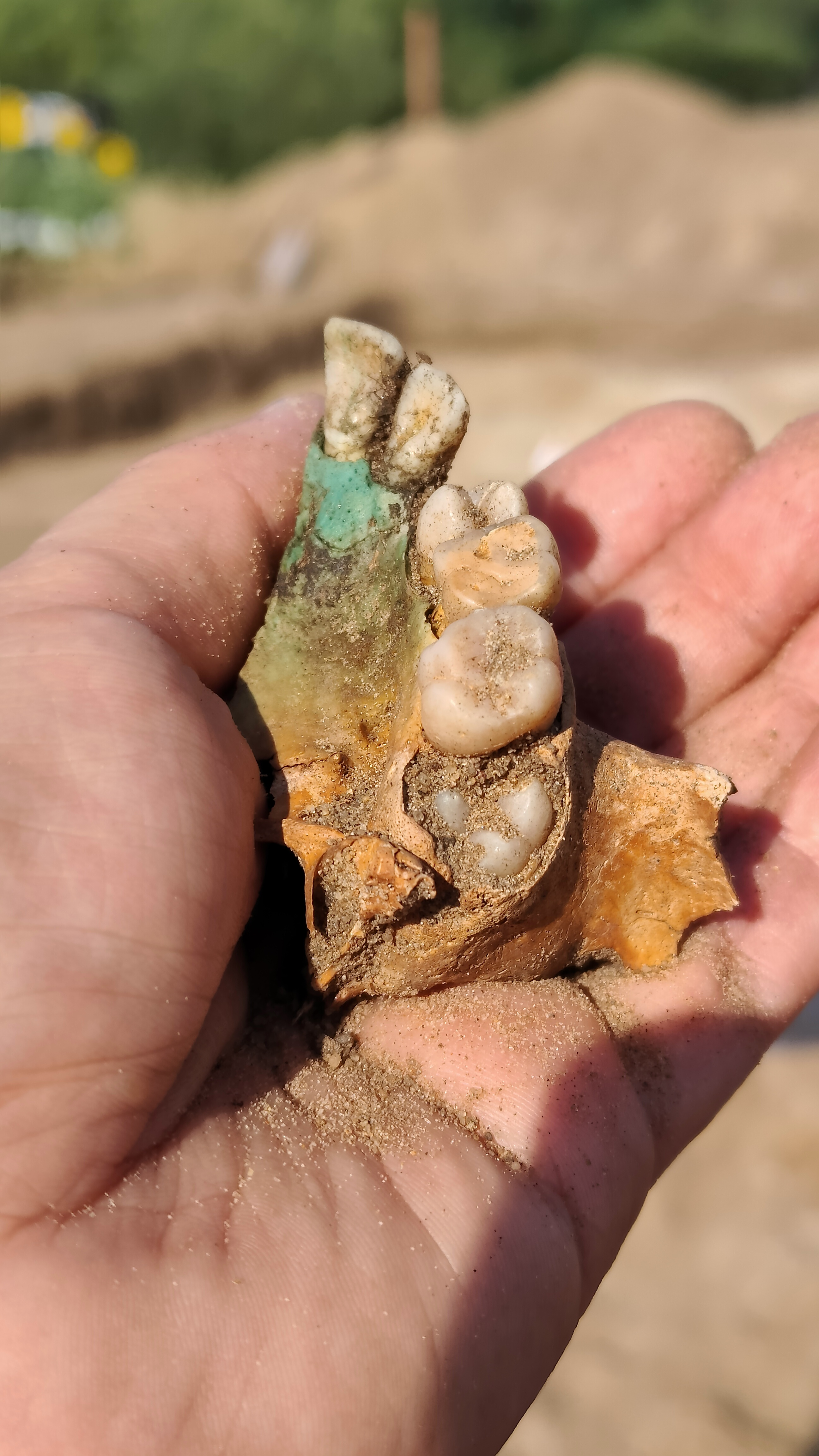Archaeologists have found the remains of a 17th-century burial near Pień in the Pomeranian Voivodeship in Poland. The infant occupant of this grave had been padlocked and buried facedown, in a practice used to stop the wicked dead from returning to haunt the living.
The discovery was found close to another grave where a female “vampire” was unearthed in 2022. This individual was padlocked, but whoever buried her took the extra precaution of placing an iron sickle across her neck.
Fear the walking dead
The idea that the dead could rise is not just the stuff of modern Hollywood horror or computer games. For centuries, and across many cultures, people have been concerned that certain individuals may not stay in their graves after death. Sometimes this was because their bodies were possessed by evil spirits or demons after they died, but often it was because the person had been regarded as “deviant” and sinful in life – this could include supposed witches, suicide victims, or anyone who just stood out as “other”.
In many cultural manifestations of the walking dead, or revenants as they are sometimes called in Northern European countries, the unquiet corpse also feeds on the blood of the living. Alternatively, there are various other monstrous entities that sought blood as a nocturnal snack as they went about their infernal business.
Today we would recognize this particular quality as the hallmark of a “vampire”, but that term was historically quite loose and could be attached to anything a bit spooky that attacked the living. They may drink blood, but they may just strangle a victim – often by sitting on them at night in a phenomenon we now attribute to sleep paralysis – or spread disease among the community.
As the restless dead were thought to be a possible menace, many cultures developed their own methods for preventing their return, which usually involved decapitation, burning the corpse’s heart, placing stones over their heads, or other tricks.
But in the 18th century, the fear of vampires became so palpable that it led to an international frenzy in what is called the “18th Century Vampire Controversy”, which allegedly started in Prussia in 1721 and spread from there. It resulted in worried civilians, as well as jittery authorities, exhuming and staking the bodies of suspected vampires.
A mass grave for the unwanted
It is within this context that the bodies discovered in Poland are situated. The woman buried with the sickle across her neck was just one of many bodies that had been subjected to some sort of posthumous protection. The new discovery, the child’s remains, is another one.
The child had been buried facedown, which was a common precaution against suspected “vampires” as it was thought they “bit into the dirt,” Professor Dariusz Poliński from Nicolaus Copernicus University in Toruń, Poland, explained to IFLScience. However, at a later date, most of the child’s remains were removed, leaving only their lower leg which had been padlocked.
The remains of a child’s jaw with a curious green stain on it.
Image courtesy of Professor Dariusz Poliński, Nicolaus Copernicus University
Nearby, Poliński and his team discovered a pit with the remains of three other children in it. Within this pit, they found the fragment of a jaw that had an unusual green stain in the bone surrounding the teeth. Chemical analysis reveals traces of copper, potassium permanganate, and gold.
According to Poliński, the staining in the jaw could be the result of a potion that was created to treat the person who became a “vampire”.
There are no known written sources related to these graves, so archaeological data is needed to reconstruct a full picture of what happened. However, the evidence so far indicates that this was likely a grave site for troublesome or unwanted people.
“The main meaning of this site is that we can learn more about [what] the main traditions and customs were for the context of treating people who were ‘different’, yes, and excluding people who were different”, Poliński explained. “So all the features here indicate that this was a graveyard for the excluded, for those who should be forgotten”.
In addition, people who were too poor to afford a burial on church land could find themselves in these types of gravesites. However, when it came to anti-vampire rituals, “it did not matter who the person was” – rich or poor, priest or peasant. If you were suspected of vampirism you would be cast into these peripheral graveyards along with anyone else who was deemed an “outsider”.
We know this because the female “vampire” discovered last year appears to have been quite wealthy. “She had been buried with a cap which had gold thread in it,” Poliński told IFLScience. In addition, there is evidence that she had been ill for some time and was treated with the potion that had gold in it.
There are still many questions associated with these mysterious remains, but Poliński and his team are now subjecting them to further analysis, which will hopefully start to fill in the gaps.
Source Link: “Vampire Child” Padlocked And Buried Facedown Unearthed In Graveyard
